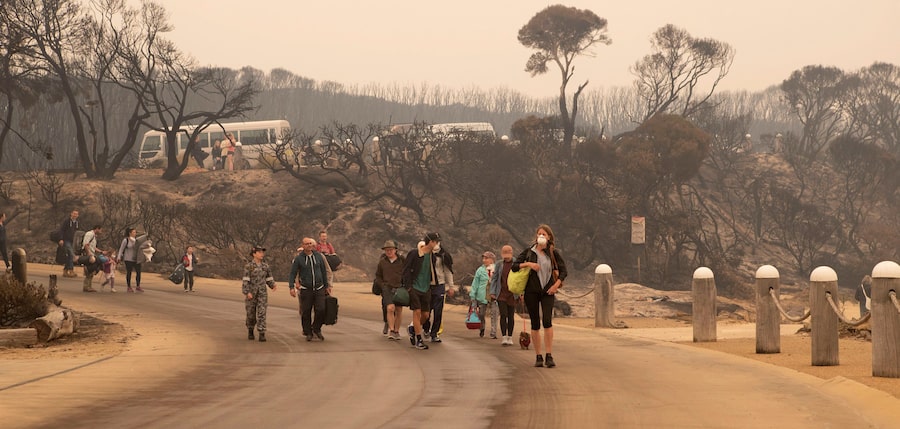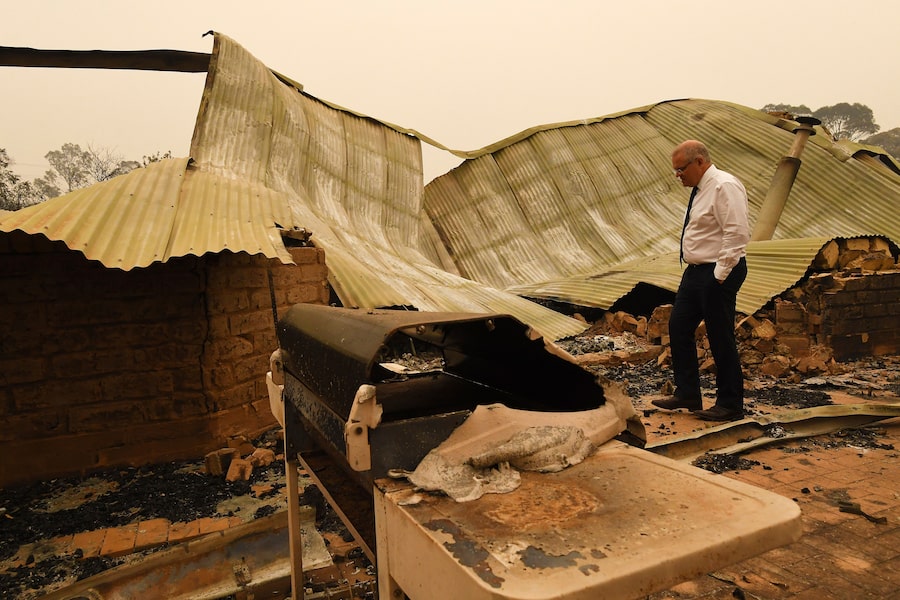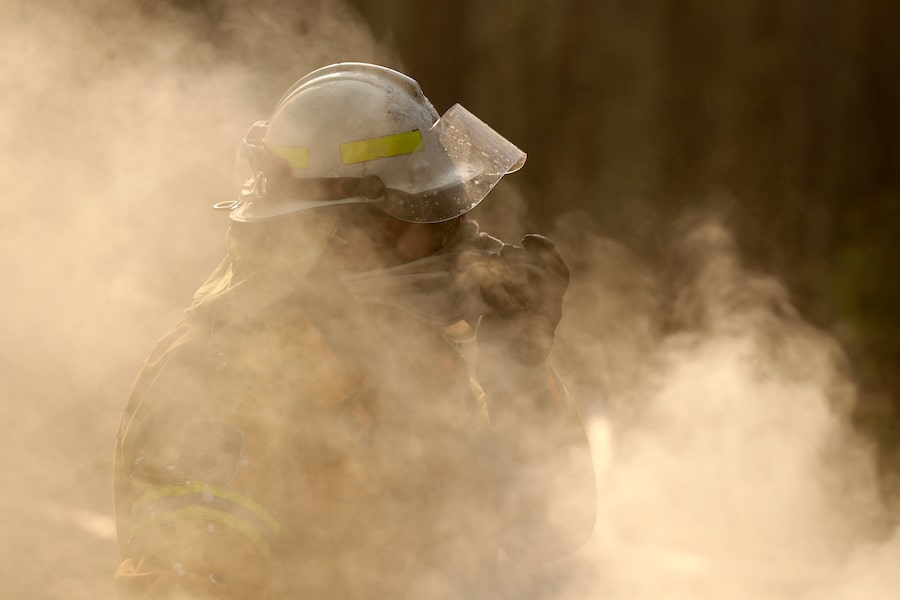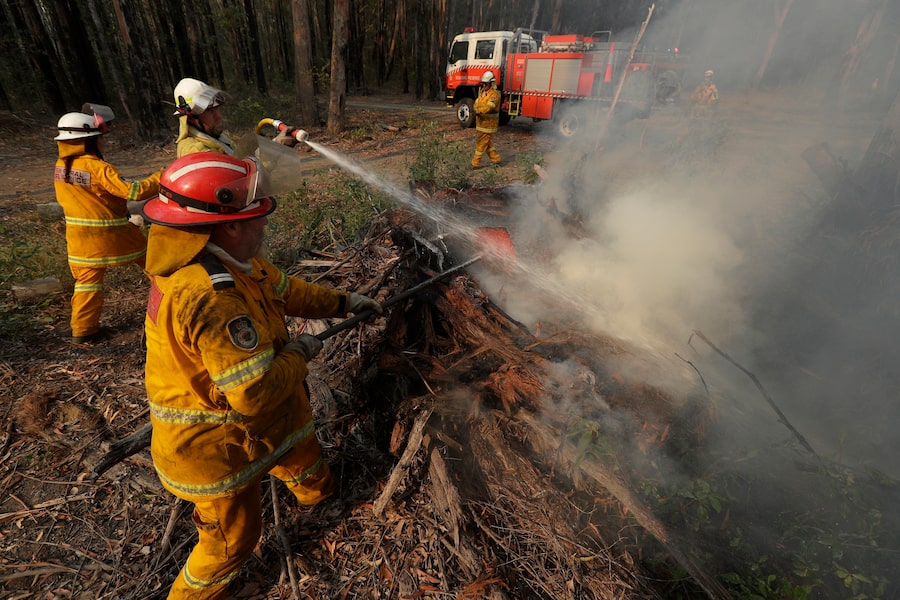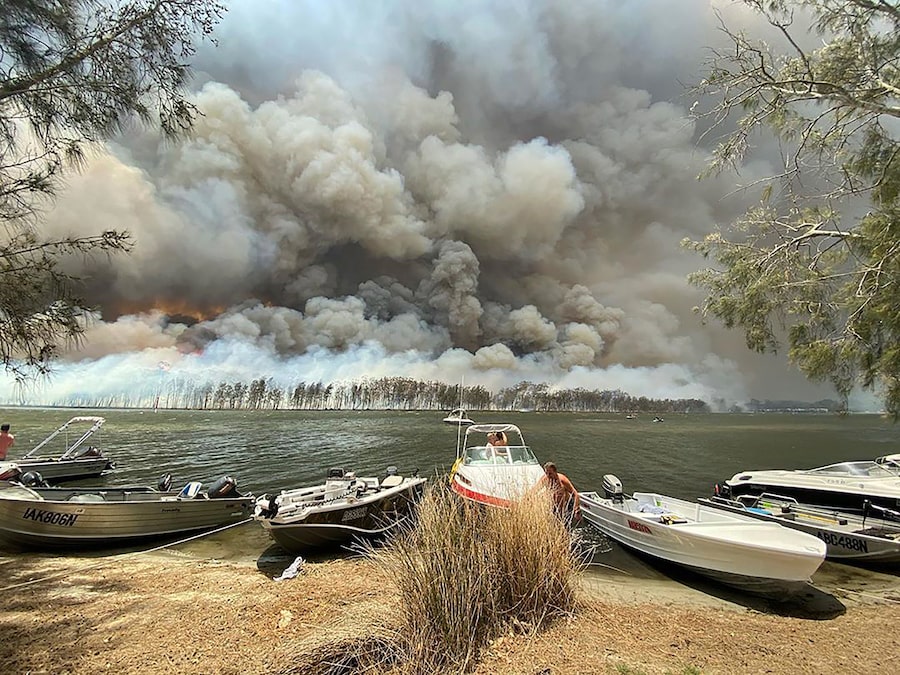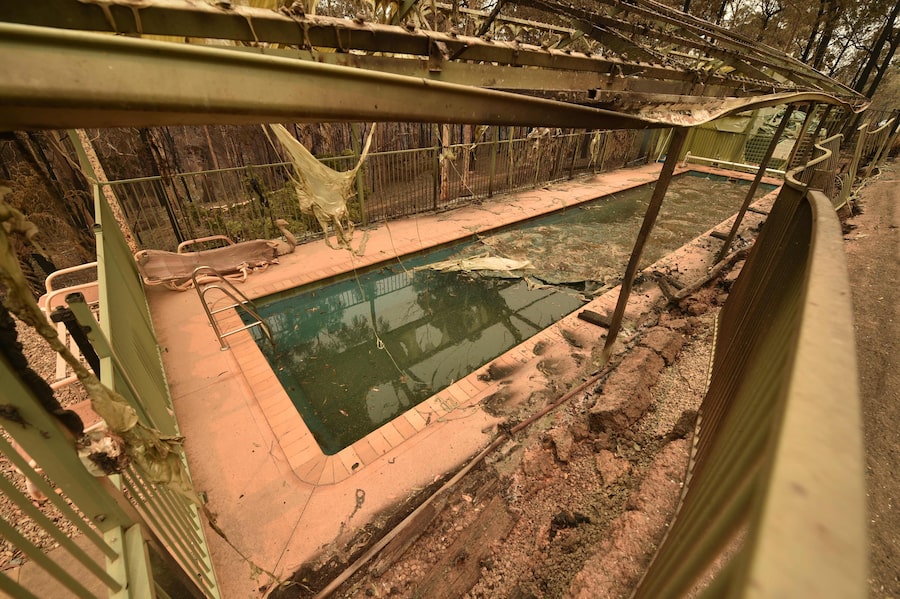Australia’s prime minister called up about 3,000 reservists as the threat of wildfires escalated Saturday in at least three states with two more deaths, and strong winds and high temperatures were forecast to bring flames to populated areas including the suburbs of Sydney.
Scott Morrison said 23 deaths have been confirmed so far this summer, including the two in a blaze on a highway on Kangaroo Island off the coast of South Australia. “We are facing another extremely difficult next 24 hours,” he told a televised news conference.
“In recent times, particularly over the course of the balance of this week, we have seen this disaster escalate to an entirely new level,” Morrison said.
He also confirmed that his scheduled visits to India and Japan later this month have been postponed. He was due to visit India from Jan. 13-16 and Japan immediately afterwards. Morrison came under fire for taking a family vacation in Hawaii as the wildfire crisis unfolded in December.
“Just around half an hour ago the governor general signed off on the call-out of the Australian Defence Force Reserve to search and bring every possible capability to bear by deploying army brigades to fire-affected communities,” he said.

AUSTRALIA FIRES
Data as of Thursday, Jan. 2, 9:00 a.m. ET
Hotspots for the past 24 hours
Evacuation zones
Banda Sea
Coral Sea
NT
AUSTRALIA
WA
QLD
SA
NSW
Sydney
Great Australian
Bight
VIC
Melbourne
0
450
KM
TAS
Evacuation zones:
State government of New South Wales has declared a state of emergency and has urged a mass exodus from several towns on the southeast coast
Nowra
Canberra
Batlow
Batemans Bay
Cabramurra
Moruya
Badja
Greg Greg
Narooma
Belowra
Kosciuszko
National Park
Cobargo
Bega
Merimbula
Eden
Wonboyn
Mallacoota
Cann River
0
30
Bemm River
KM
MURAT YÜKSELIR / THE GLOBE AND MAIL, SOURCE:
TILEZEN; OSM CONTRIBUTORS; NEW SOUTH WALES
GOVERNMENT; NASA

AUSTRALIA FIRES
Data as of Thursday, Jan. 2, 9:00 a.m. ET
Hotspots for the past 24 hours
Evacuation zones
PAPUA NEW
GUINEA
Banda Sea
Coral Sea
NT
AUSTRALIA
WA
QLD
SA
NSW
Sydney
Great Australian
Bight
VIC
Melbourne
0
450
TAS
KM
Evacuation zones:
State government of New South Wales has declared a state of emergency and has urged a mass exodus from several towns on the southeast coast
Nowra
Canberra
Batlow
Batemans Bay
Cabramurra
Moruya
Badja
Greg Greg
Narooma
Belowra
Kosciuszko
National Park
Cobargo
Bega
Merimbula
Eden
Wonboyn
Mallacoota
Cann River
0
30
KM
Bemm River
MURAT YÜKSELIR / THE GLOBE AND MAIL, SOURCE: TILEZEN;
OSM CONTRIBUTORS; NEW SOUTH WALES GOVERNMENT; NASA

AUSTRALIA FIRES
Data as of Thursday, Jan. 2, 9:00 a.m. ET
Hotspots for the past 24 hours
Evacuation zones
PAPUA NEW
GUINEA
Banda Sea
Solomon Sea
NORTHERN
TERRITORY
Coral Sea
QUEENSLAND
AUSTRALIA
WESTERN
AUSTRALIA
SOUTH
AUSTRALIA
NEW SOUTH
WALES
Great Australian
Bight
Sydney
VICTORIA
Melbourne
0
450
TASMANIA
KM
Nowra
Evacuation zones:
State government of New South Wales has declared a state of emergency and has urged a mass exodus from several towns on the southeast coast
Canberra
Batlow
Batemans Bay
Moruya
Cabramurra
Badja
Greg Greg
Belowra
Narooma
Kosciuszko
National Park
Cobargo
Bega
Merimbula
Eden
Wonboyn
Mallacoota
Cann River
0
30
KM
Bemm River
MURAT YÜKSELIR / THE GLOBE AND MAIL, SOURCE: TILEZEN; OSM CONTRIBUTORS;
NEW SOUTH WALES GOVERNMENT; NASA
Defence Minister Linda Reynolds said this was the first time that reservists have been called out “in this way in living memory and, in fact, I believe for the first time in our nation’s history.”
The government has committed 20 million Australian dollars ($14 million) to lease four fire-fighting aircraft for the duration of the crisis, and the helicopter-equipped HMAS Adelaide was deployed to assist evacuations from fire-ravaged areas.
The fire danger increased as temperatures rose to record levels across Australia, surpassing 43 degrees Celsius (109 Fahrenheit) in the capital Canberra and 48 C (118 F) in Penrith, in Sydney’s western suburbs.
New South Wales Premier Gladys Berejiklian said her state was facing “another terrible day” and called on people in areas threatened by the fires to leave while they can.
“I’m pleased to say that we’ve never been as prepared as we are today for the onslaught we’re likely to face,” Berejiklian told reporters. “All of the major road networks are still open but we can’t guarantee that beyond the next few hours. So there are still windows for people to get out.”
The deadly fire on Kangaroo Island broke containment lines Friday and was described as “virtually unstoppable” as it destroyed buildings and burned through more than 14,000 hectares (35,000 acres) of Flinders Chase National Park. While the warning level for the fire was reduced Saturday, the Country Fire Service said it was still a risk to lives and property.

A firefighter covers his face from block smoke as he battles a fire near Bendalong, Australia, Friday, Jan. 3, 2020.Rick Rycroft/The Associated Press

Maps of active fires are displayed in the emergency center on January 4, 2020 in Melbourne, Australia.Dominic O'Brien/Getty Images
New South Wales Rural Fire Service Deputy Commissioner Rob Rogers warned the fires could move “frighteningly quick.” Embers carried by the wind had the potential to spark new fires or enlarge existing blazes.
Rural Fire Service Commissioner Shane Fizsimmons said the 264,000-hectare (652,000-acre) Green Wattle Creek fire in a national park west of Sydney had the potential to spread into Sydney’s western suburbs.
He said crews have been doing “extraordinary work” by setting controlled fires and using aircraft and machinery to try to keep the flames away.
Fitzsimmons called on residents and tourists in the path of the fires to evacuate as soon as possible.
“Our message has been to make sure you leave yesterday,” he said. “Leaving it until today is cutting it fine. The sooner you make that decision the better and I would say do it now. Don’t leave it any longer because the window will shrink and will shrink very quickly.”
More than 130 fires were burning in New South Wales and at least half of those were out of control. Temperatures in parts of the state are expected to soar in the mid-40s C (about 113 F) amid strong winds and low humidity.
A total of 48 fires were burning across almost 320,000 hectares (791,000 acres) in Victoria state and conditions were expected to worsen with a southerly wind change.
“We still have those dynamic and dangerous conditions, the low humidity, the strong winds and, what underpins that, the state is tinder dry,” Victoria Emergency Services Commissioner Andrew Crisp said.
Thousands have already fled fire-threatened areas in Victoria and Crisp urged more people to leave.
“If you might be thinking about I can get out on a particular road close to you, well there’s every chance that a fire could hit that particular road and you can’t get out,” he said.
A view of a property impacted by the Currowan Fire in Conjola Park, NSW, Australia, January 2, 2020.STRINGER/Reuters
Victoria police reported heavy traffic flows on major roads and praised motorists for their patient and orderly behaviour.
The early and devastating start to Australia’s summer wildfires has already burned about 5 million hectares (12.35 million acres) of land and destroyed more than 1,500 homes. That’s more acres burned in Australia than any one year in the U.S. since Harry Truman was president.
Marc Mousseau is currently in Melbourne, helping coordinate resources to fight Australia's raging wildfires. Usually based out of the Canadian Interagency Forest Fire Centre in Winnipeg, Mousseau says conditions are expected to worsen into January.
The Globe and Mail
